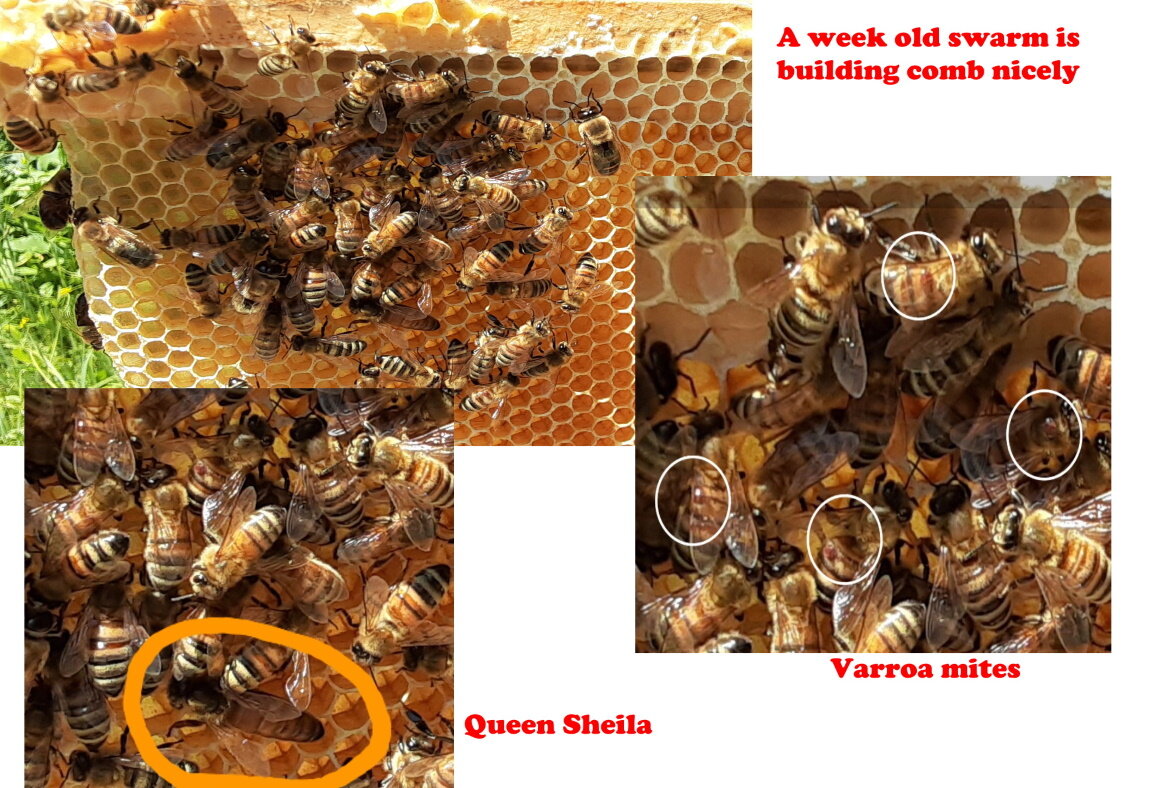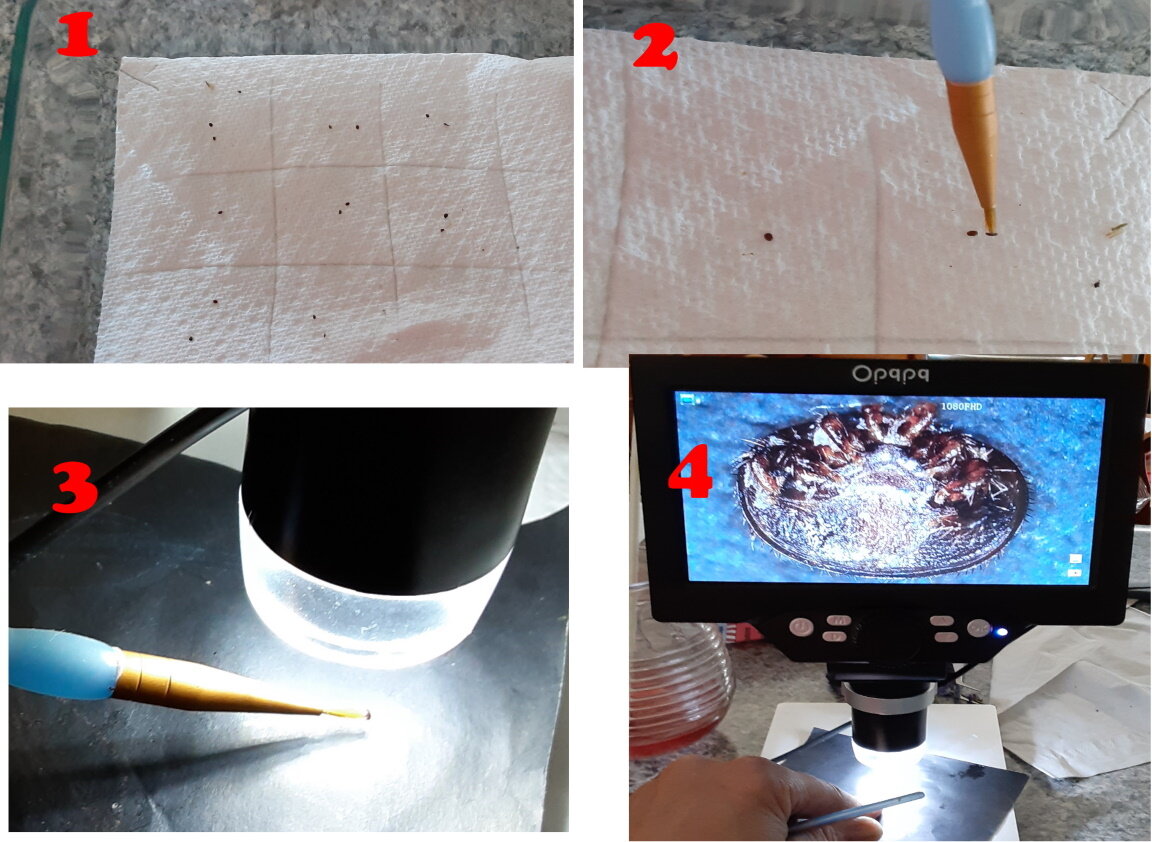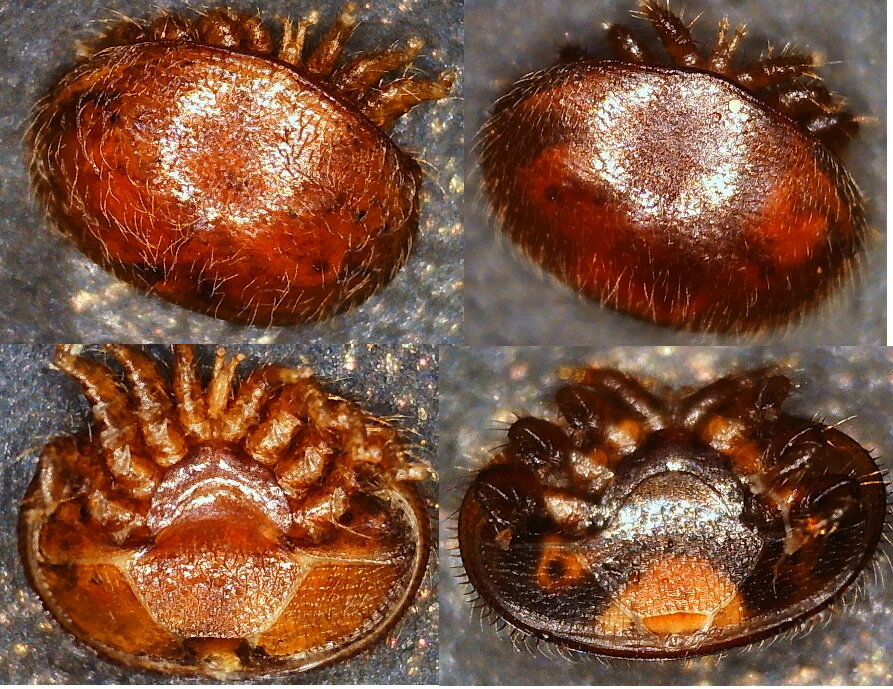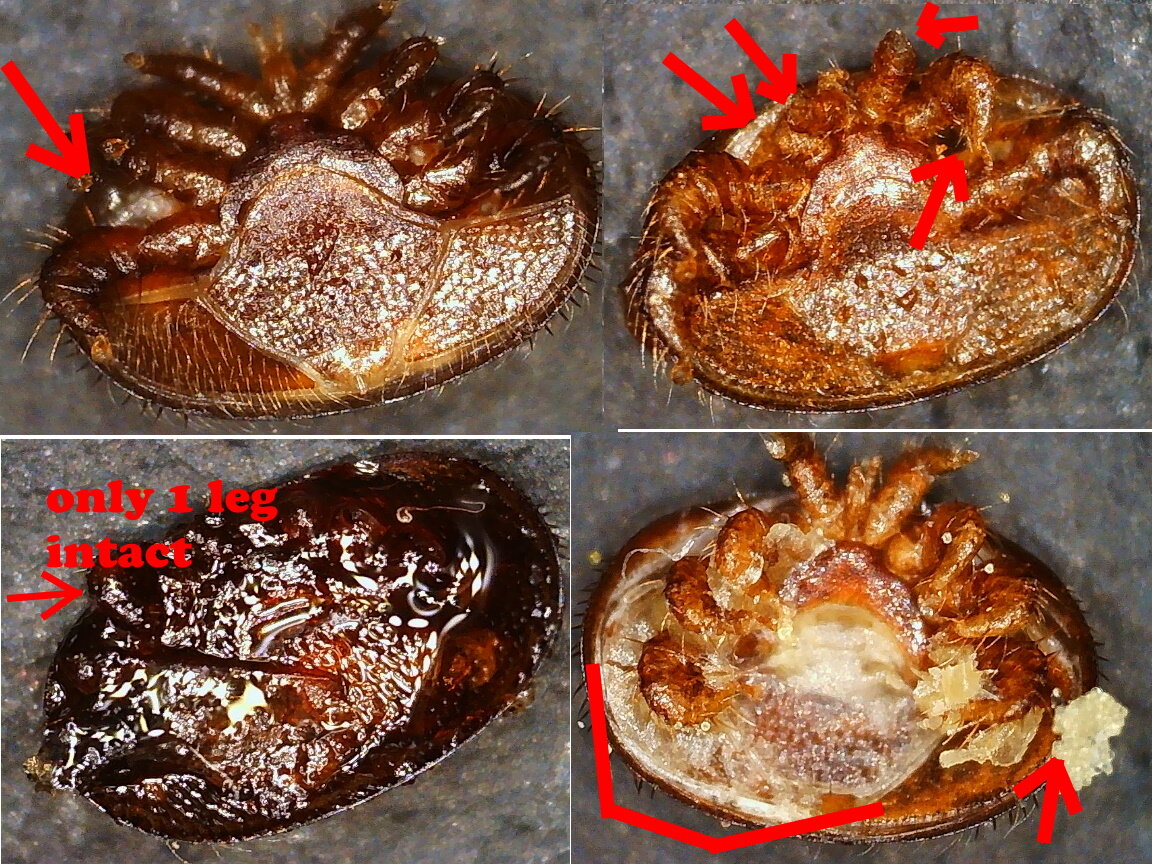
This is a swarm we were called to remove. After a week isolated away from our apiary,they are building comb nicely and have a nice fat queen, BUT are infested with honeybees enemy VARROA mites, which can weaken or kill a bee colony or cause them to abscond. There are 4 mites visible just in this photo. Many will not be seen under the belly scales of a bee. We treated these gals with oxalic acid and had tremendous mite drop. Our goal is to have honeybees that will also control mites on their own by seeking out and killing mites . This trait is the "Mite biter or Mite mauler"

We are members of the Michigan Beekeepers Association and they had a very informative seminar on how to tell which hives have the mite biter traits. This is my process 1: I made a grid on a paper towel and with a soft paintbrush removed the mites I found under each hive and placed on the grid.2: I used the brush to transfer one mite at a time to my 2000X dissecting scope platform 3:After looking for mite injuries from the bees, gently flip over the mite to look at the opposite side. 4: From barely visible tiny mite to big ugly bug!

These are varroa mites, top and bottom. No visible honeybee bites damage.

In these images you can see bite damage evidence from the honeybees. Legs bitten off, whole belly plate missing one one, guts leaking out on others
We had our own colonies that overwintered and also purchased 3 northern Michigan nucs to add to our Apiary this spring with the Mite mauler traits.
After looking with the scope at mites from the bottom boards of all 7 colonies, we are very pleased that
Our own northern Michigan survivors have Mite Biter traits!! Along with the purchased 3 nucs
Our goal this year is to split and expand those with the Mite Biter traits and get all of them to be super healthy Northern Michigan Survivor bees. And eventually to sell Nucs and Queens to our community to expand these genetics and hopefully help the Honeybee populations thrive.